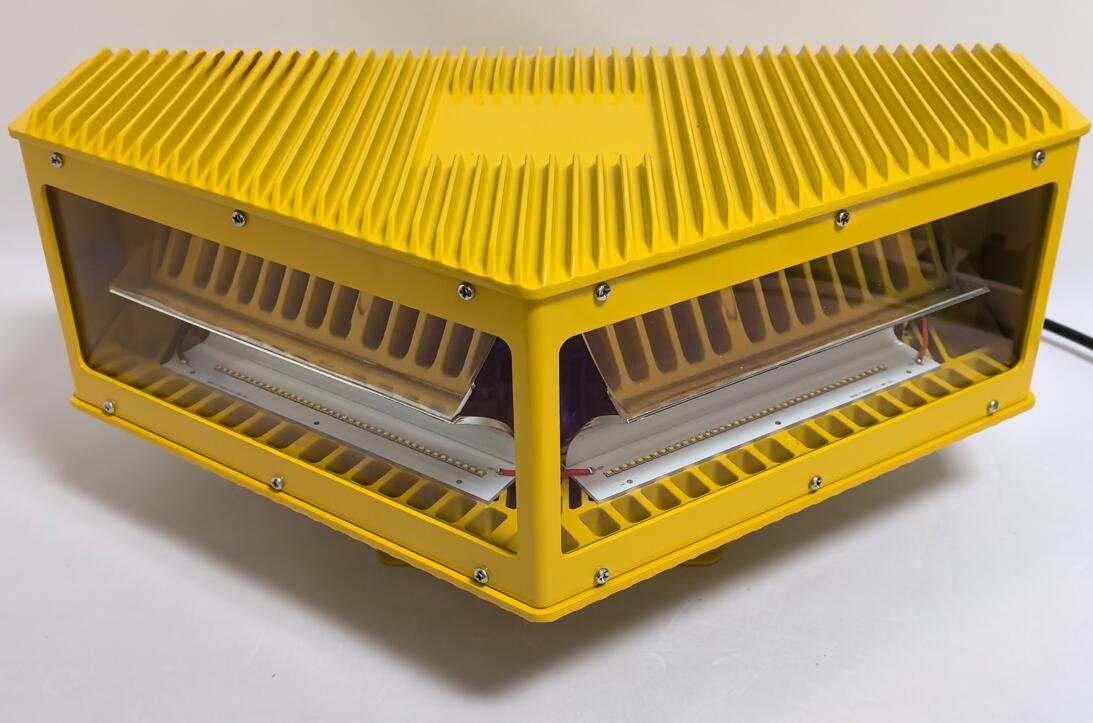Aviation Obstacle Light: The Silent Guardian of Flight Safety
In our vertically expanding world, aviation obstacle light systems have become an indispensable component of airspace safety. These specialized lighting solutions serve as visual sentinels, protecting aircraft from potential collisions with tall structures day and night. This comprehensive guide explores the critical role, technological evolution, and future prospects of aviation obstacle light systems that stand between safe flights and potential disasters.
The Critical Importance of Aviation Obstacle Lights
Aviation obstacle light systems fulfill three vital safety functions:

Visual Warning System: Provide 24/7 visibility of structures to pilots
Height Identification: Help aircraft maintain proper altitude clearance
| Aviation obstacle light |
Collision Prevention: Reduce accident risks in all weather conditions
Without these systems, modern aviation would face significantly higher risks from:
Urban skyscrapers
Communication towers
Wind turbines
Bridge cables
Construction cranes
| Aviation obstacle lights |
Types of Aviation Obstacle Lights
1. Low-Intensity Obstacle Lights
Red steady-burning or flashing lights
For structures below 45 meters (148 feet)
Common on small buildings and temporary structures
2. Medium-Intensity Obstacle Lights
White strobes or red flashing lights
For structures 45-150 meters (148-492 feet)
Used on most communication towers
3. High-Intensity Obstacle Lights
Powerful white strobes visible for miles
For structures exceeding 150 meters (492 feet)
Essential for skyscrapers and tall towers
4. Dual Lighting Systems
Combine red and white light technologies
Provide continuous day/night visibility
Used in high-traffic airspace zones
Technological Advancements in Obstacle Lighting
Modern aviation obstacle light systems incorporate cutting-edge innovations:
LED Revolution:
80% more energy efficient than traditional lighting
50,000+ hour lifespan reduces maintenance
Instant on/off capability with full brightness
Smart Monitoring Systems:
Real-time performance diagnostics
Automated fault detection alerts
Remote brightness adjustment
Solar Hybrid Solutions:
Off-grid operation capability
Battery backup for continuous operation
Sustainable power alternative
Wireless Synchronization:
Precise flash sequencing without wiring
Easy integration with existing structures
Scalable for multiple installations
Regulatory Standards and Compliance
Aviation obstacle light systems must meet strict international standards:
ICAO Annex 14:
Global standard for obstacle lighting
Specifies light intensity and coverage
FAA AC 70/7460:
US requirements for obstruction marking
Detailed specifications for various structure types
EASA Regulations:
European aviation safety standards
Harmonized across EU member states
Key compliance factors include:
Proper light intensity and color
Correct placement and spacing
Reliable operation in all weather
Regular maintenance protocols
Installation Best Practices
Proper installation ensures optimal performance:
Site Assessment:
Evaluate structure height and location
Identify potential visibility obstacles
Light Placement:
Install at highest points of structure
Space lights appropriately for full coverage
Power Considerations:
Ensure reliable power supply
Install backup systems for critical locations
Maintenance Planning:
Schedule regular inspections
Keep replacement parts available
Emerging Trends and Future Developments
The aviation obstacle light industry is evolving with:
Drone Compatibility:
Adapting systems for low-altitude UAV traffic
Developing specific lighting for drone corridors
AI Integration:
Predictive maintenance algorithms
Smart adjustment based on traffic density
Enhanced Sustainability:
Improved solar efficiency
Recyclable materials and components
Advanced Visibility Systems:
Radar-enhanced identification
Aircraft-activated lighting sequences
Aviation obstacle light systems represent a critical layer of protection in our increasingly crowded airspace. As urban development continues its vertical expansion and air traffic grows more dense, these lighting solutions must evolve to meet new challenges. The future of aviation obstacle light technology lies in smarter, more efficient systems that not only prevent collisions but also communicate with aircraft and adapt to changing conditions.
